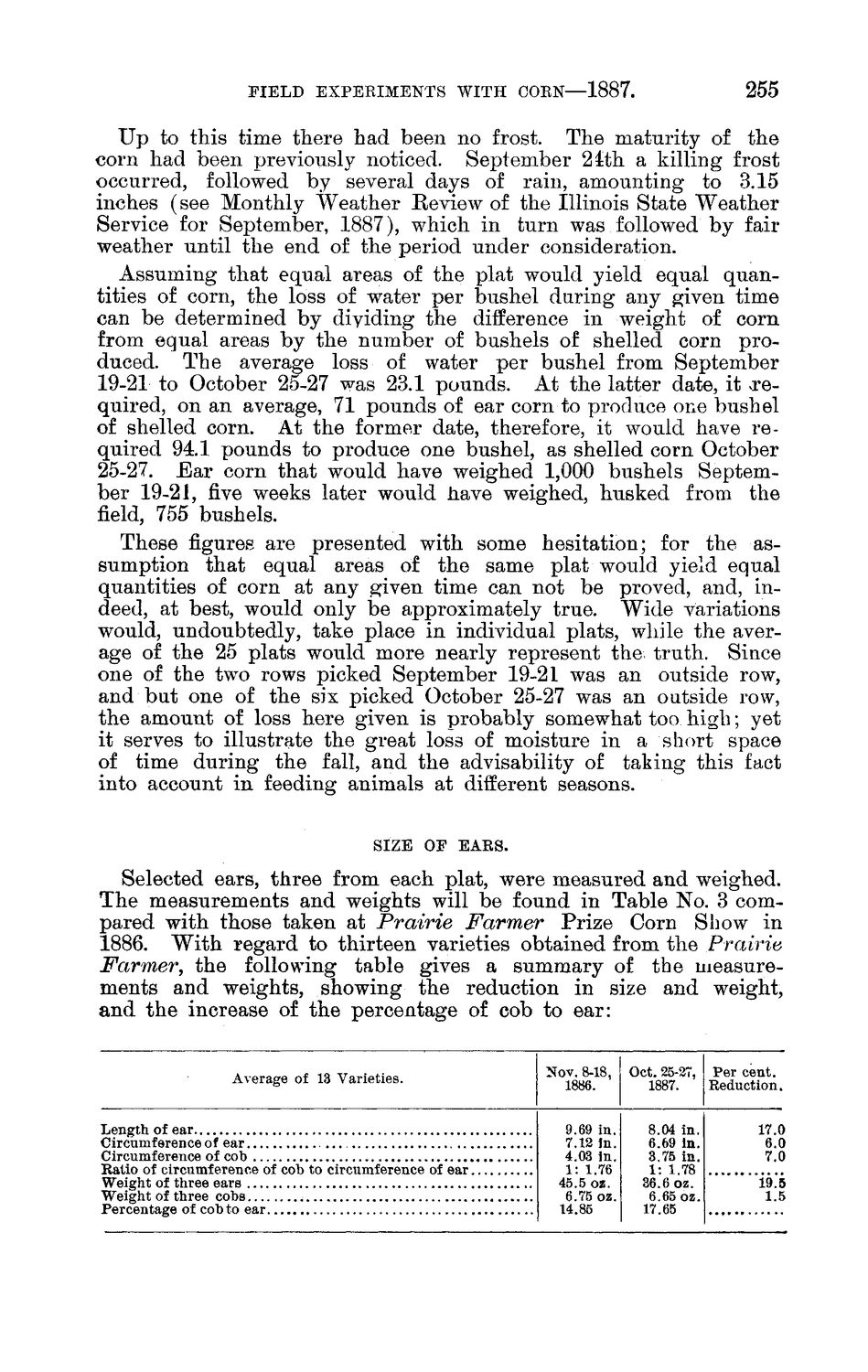| |
| |
Caption: Board of Trustees Minutes - 1888
This is a reduced-resolution page image for fast online browsing.

EXTRACTED TEXT FROM PAGE:
FIELD EXPERIMENTS WITH CORN—1887. 255 U p to this time there had been no frost. The maturity of the corn had been previously noticed. September 2tth a killing frost occurred, followed by several days of rain, amounting to 3.15 inches (see Monthly Weather Review of the Illinois State Weather Service for September, 1887), which in turn was followed by fair weather until the end of the period under consideration. Assuming that equal areas of the plat would yield equal quantities of corn, the loss of water per bushel during any given time can be determined by diyiding the difference in weight of corn from equal areas by the number of bushels of shelled corn produced. The average loss of water per bushel from September 19-21 to October 25-27 was 23.1 pounds. At the latter date, it .required, on an average, 71 pounds of ear corn to produce one bushel of shelled corn. At the former date, therefore, it would have required 94.1 pounds to produce one bushel, as shelled corn October 25-27. E a r corn that would have weighed 1,000 bushels September 19-21, five weeks later would have weighed, husked from the field, 755 bushels. These figures are presented with some hesitation; for the assumption that equal areas of the same plat would yield equal quantities of corn at any given time can not be proved, and, indeed, at best, would only be approximately true. Wide variations would, undoubtedly, take place in individual plats, while the average of the 25 plats would more nearly represent the truth. Since one of the two rows picked September 19-21 was an outside row, and but one of the six picked October 25-27 was an outside row, the amount of loss here given is probably somewhat too high; yet it serves to illustrate the great loss of moisture in a short space of time during the fall, and the advisability of taking this fact into account in feeding animals at different seasons. SIZE OF EARS. Selected ears, three from each plat, were measured and weighed. The measurements and weights will be found in Table No. 3 compared with those taken at Prairie Farmer Prize Corn Show in 1886. With regard to thirteen varieties obtained from the Prairie Farmer, the following table gives a summary of the measurements and weights, showing the reduction in size and weight, and the increase of the percentage of cob to ear: Average of 13 Varieties. Length of ear Circumference of ear Circumference of cob Ratio of circumference of cob to circumference of ear Weight of three ears Weight of three cobs Percentage of cob to ear Nov. 8-18, Oct. 25-27, Per cent. Reduction. 1886. 1887. 9.69 in. 7.12 in. 4.03 in. 1: 1.76 45.5 oz. 6.75 oz. 14.85 8.04 in. 6.69 in. 3.75 in. 1: 1.78 36.6 oz. 6.65 oz. 17.65 17.0 6.0 7.0 19.5 1.5
| |